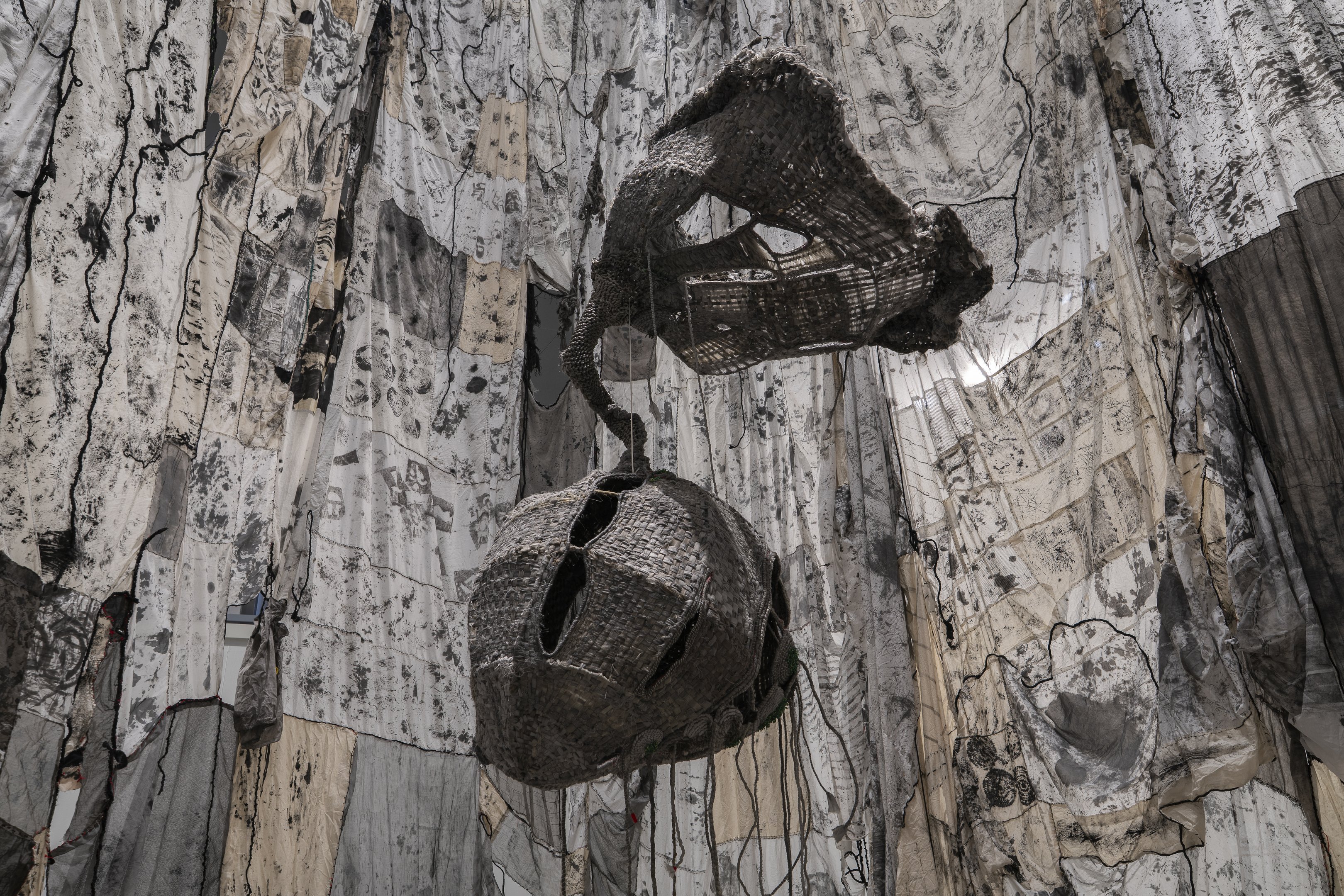Aluaiy Kaumakan’s (b. 1971) practice is rooted in the heritage of the Paiwan Nation and the Paridrayan Community of southern Taiwan, drawing from her role as an Indigenous woman responding to contemporary issues.
Employing traditional handicrafts, she intertwines the life memories of tribal nobility to create space for the resurgence of Indigenous Taiwanese culture and its legacy in art, ecology and cultural politics. Kaumakan creates sculptures and installations using cotton, copper, silk and glass beads. Using a traditional Paiwan weaving technique known as lemikalik, she creates forms with a distinctly organic or vegetal presence.
Photo: Wei-Lun, LU

Aluaiy Kaumakan: Cevulj – Path of a Family, 2021-22, detail. Helsinki Biennial 8.6.–21.9.2025, HAM Helsinki Art Museum. Photo: HAM / Helsinki Biennial / Sonja Hyytiäinen
Cevulj – Path of a Family, 2021–22
Artwork location: HAM Helsinki Art Museum
In 2009, Kaumakan’s village was hit by the particularly violent Typhoon Morakot, forcing the inhabitants to leave their homes and relocate to a new community. In the making of Cevulj – Path of a Family, Kaumakan returned to her ancestral village and sought to reconnect members of her displaced community through a creative, communal process of reactivating and transforming old traditions. Her installation in HAM’s north gallery makes a statement about finding ways to dwell and survive in a disturbed and altered environment.
The installation forms part of her Rubbings series, in which she prints cultural and architectural artefacts onto fabric through a process of rubbing, using pigments made of minerals and ash from ceremonial fires in her ancestral village. While touching stone walls built by her ancestors, the artist happened to see a plant sprouting through a crack, which appeared to her as a symbol of resilience, showing how life continues to thrive and how her ancestral spirits remain connected.